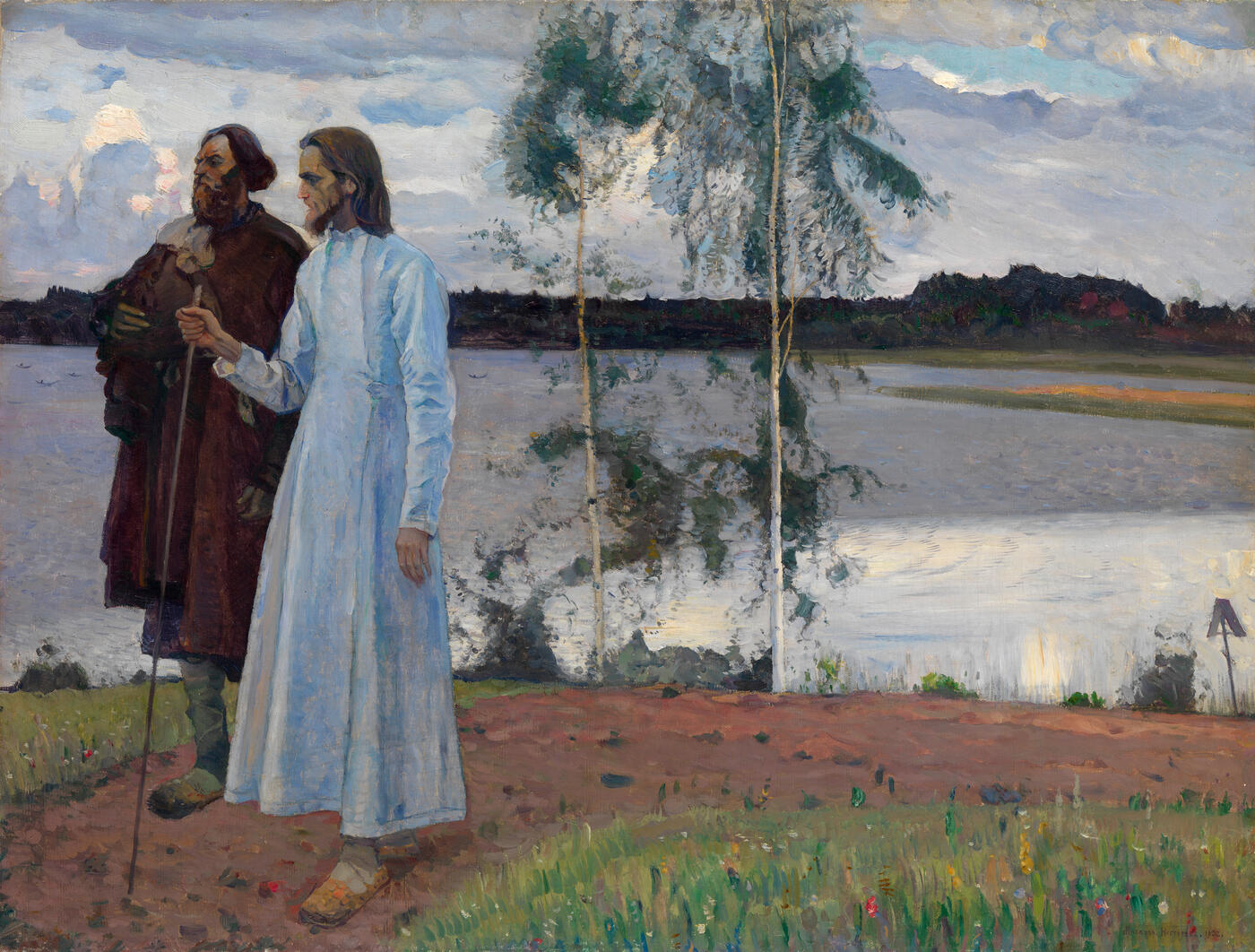5 June 2013 Russian Art Auctions
5 June 2013

* 19. NESTEROV, MIKHAIL (1862-1942)
Wayfarers. Beyond the Volga, signed and dated 1922.
Oil on canvas, 81.5 by 107.5 cm.
1,400,000–3,000,000 GBP
Provenance: Private collection, Europe.
Authenticity of the work has been confirmed by the experts A. Gusarova and L. Gladkova.
Authenticity has also been confirmed by the experts S. Rimskaya-Korsakova, P. Klimov and A. Nizamutdinova.
Exhibited: Mikhail Nesterov, The State Russian Museum, St Petersburg, 5 April–30 July 2012.
Literature: E. Petrova, et al., Mikhail Nesterov, St Petersburg, Palace Editions, 2012, pp. 192–193,
pl. 202, illustrated and listed.
P. Klimova, Mikhail Nesterov, St Petersburg, Zolotoi vek, 2008, pl. 133, illustrated; p. 470, listed.
E. Malinina, Mikhail Nesterov, Moscow, Belyi gorod, 2008, p. 43, illustrated.
Related Literature: For similar works, see A. Mikhailov, Mikhail Nesterov, Moscow, Sovetskii
khudozhnik, 1958, pp. 292, 482.
V. Fiala, Russkaya zhivopis’ v sobraniyakh Chekhoslovakii, Leningrad, Khudozhnik RSFSR, 1974, p. 106.
A. Gusarova, Mikhail Nesterov, Moscow, Belyi gorod, 2000, p. 38.
The canvas here at auction, Wayfarers. Beyond the Volga, undoubtedly represents the peak of Mikhail Nesterov’s mature oeuvre. It was painted in 1922 as a development of his famous Wanderer compositions that are now the pride of the Tretyakov and Tver Art Galleries. These canvasses were a summation of the artist’s earthly quest to find an image for the Russian Christ.
The first two versions of Wayfarer, painted in 1921, are compositionally similar. Christ is depicted with his travelling companion in the middle of a field. In one he is with a peasant, in the other with a young lad reminiscent of the boy in Soul of the People. They are greeted by a woman bowing from the waist. Nothing directly indicates that the person before us is Christ: he is dressed in a long robe and bast shoes like a simple traveller. Yet there is no doubt this is Jesus. In the figure of the wayfarer, whose fine facial features, expressive hands and emaciated arms have a spiritual look, Nesterov conveys both benevolence and an element of tragedy, the inner nobility and gravitas that must be present in the divine image.
Nesterov’s model for his wayfarer, and the prophet in the picture of the same name, was the Armavir priest Father Leonid Fyodorovich Dmitrievsky, whose spiritual discipline and expressive appearance attracted the artist’s attention. Nesterov had met him in 1918, when for fear of disturbances and hunger in the capitals, he spent two years in Kuban. After Nesterov returned to Moscow he kept up a correspondence with the Armavir priest over many years, and in 1938 even took care of the persecuted Dmitrievsky on his return home from exile in Kargopol.
Notes on symbols:
* Indicates 5% Import Duty Charge applies.
Ω Indicates 20% Import Duty Charge applies.
§ Indicates Artist's Resale Right applies.
† Indicates Standard VAT scheme applies, and the rate of 20% VAT will be charged on both hammer price and premium.